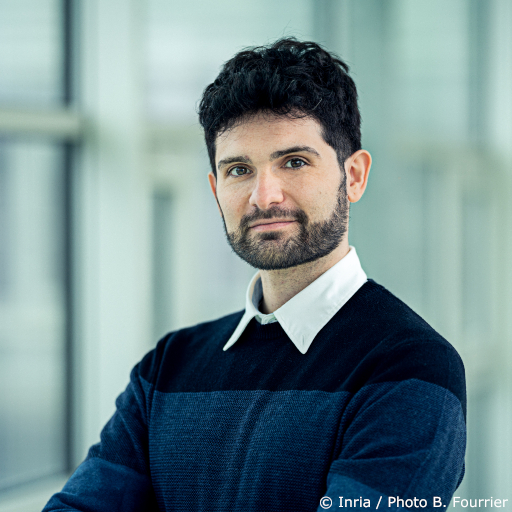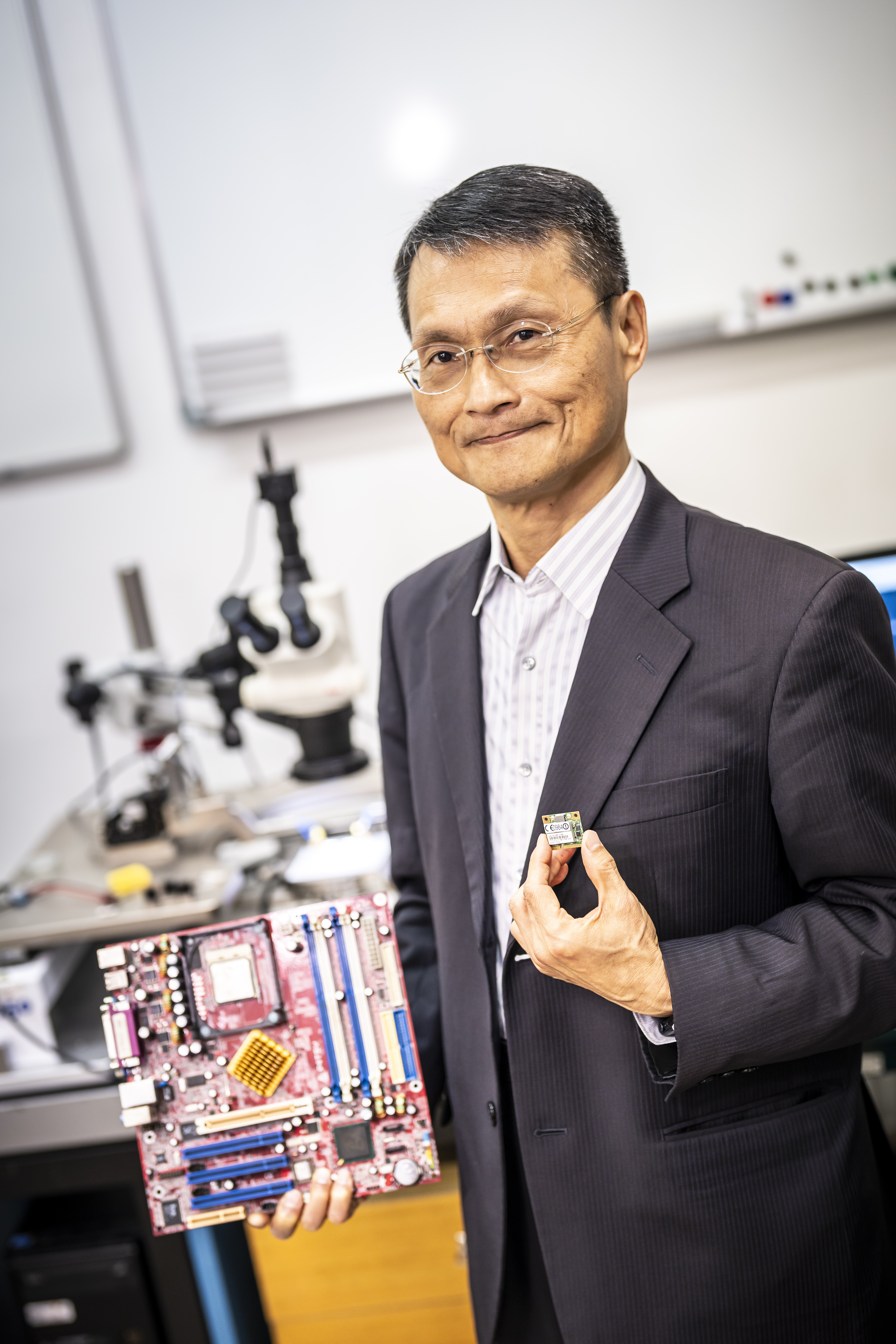
Praha-Vinoř, Czech Republic
Praha-Vinoř, Czech Republic
Keynotes
Toward Adaptive Embedded Systems: from Multi-Objective Design to Runtime Adaptation
Speaker: Marcello Traiola, Ph.D. (Inria centre at Rennes University, France)
Embedded systems operate under tight and often conflicting constraints, such as energy, performance, accuracy, and reliability. Optimizing across these dimensions is complex, especially as systems must now operate under dynamic and unpredictable conditions.
This talk presents a vision for a two-phase approach to embedded system design that brings together design-time optimization and runtime adaptation. We begin with concrete examples of design space exploration, where multi-objective optimization techniques are used to identify Pareto-optimal configurations that span energy, reliability, and accuracy trade-offs. These configurations serve as a foundation for system flexibility.
Next, we shift focus to runtime adaptation, showcasing examples where systems can dynamically adapt to real-time conditions such as workload variations or energy constraints, enabling a new generation of adaptive, context-aware embedded architectures.
 |
Marcello Traiola is a tenured Research Scientist with the Inria Research Institute at the IRISA laboratory in Rennes, France. He received the Laurea degree (MSc) in Computer Engineering in 2016 from the University of Naples Federico II, Italy, and the Ph.D. degree in Computer Engineering in 2019 from the University of Montpellier, France. He regularly serves as a committee member and organizing member at several international conferences. His main research topics include emerging computing paradigms, with a special interest in hardware design, testing, and reliability. |
Automatic Analog IC Design Optimization
Speaker: Poki Chen (National Taiwan University of Science and Technology, Taiwan)
System/circuit design always takes extensive work hours with manual labor, and state-of-the-art design optimization algorithms are often need to be more practical due to their multidisciplinary expertise requirements. Taking analog IC design for a good example, software automation is one way to reduce IC design workload, particularly during fine-tuning process. One of the benefits of automating parts of the design process is progress with uptime as high as 24 hours a day, which are infeasible for design engineers. While optimization methods using genetic algorithms and machine learning can improve performance of analog ICs significantly, the operation of such complex methods requires circuit design and software development know-how. However, simple optimization methods such as parameter random spread outlined in this paper have shown to reduce the temperature coefficient of a voltage reference circuit by 25% in a typical corner and 82% in the fast-fast corner. Such performance improvement demonstrates that even a basic automated optimization procedure can help optimize circuits without further human interactions.
 |
Poki Chen received his B.S., M.S., and Ph.D. degrees in Electrical Engineering from National Taiwan University. He also received a doctorate honoris causa from CTU in 2025. He is a Professor in the Electronic and Computer Engineering Department at NTUST. He has served as an Associate Editor for IEEE TVLSI since 2011 and IEEE Access since 2013. His research interests include analog and mixed-signal IC design and layout, with a special focus on time-domain signal processing circuits, such as smart temperature sensors, TDC, DTC, ADC, and high-accuracy DAC. He is also interested in developing innovative analog applications for FPGA platforms, such as FPGA smart temperature sensors, TDC and DTC. |
Industrial talks
MEMS sensors for edge AI processing
Speaker: Petr Štukjunger (STMicroelectronics, Czech Rep.)
Algorithms are moving from cloud to embedded systems. In modern applications the traditional approach of gathering raw sensor data and sending the data to cloud is replaced by processing in embedded systems.
The latest MEMS sensors from STMicroelectronics have brought computing even closer to the sensor - actually, inside the sensor itself.
Processing cores of ST’s MEMS sensors allow implementation of conventional as well as AI based algorithms. By leveraging on machine learning approach designers can target consumer, industrial as well as automotive applications.
This innovative approach allows to engineers reaching ultra-low power consumption of their embedded systems while offloading communications buses and the main processor.
In this talk we will see a complete overview of ST’s accelerometers and IMUs with embedded processing and examine the advantages of utilizing these sensors in the design of cutting-edge embedded systems.
 |
Petr Štukjunger is a highly experienced Senior Application Engineer, focusing on motion and environmental MEMS and sensors. He works for STMicroelectronics, a global semiconductor company, and is based in Prague, Czech Republic. He holds a Master of Science degree in Computer Science from the Czech Technical University in Prague and a Bachelor of Science degree in Business Computing from the Institute of Technology in Sligo, Ireland. Petr has been working for ST for over 15 years, providing technical support to numerous customers in the EMEA region. |
Optimizing and Deploying Neural Networks to Mobile Devices
Speaker: Pavel Macenauer (NXP Semiconductors, Czech Rep.)
Optimizing neural networks is a crucial step for their deployment to embedded and mobile devices ranging from automotive visual systems to your smart watches. We will explore the challenges in doing so, dive into specific use cases and discuss algorithms used for such tasks.
 |
Pavel Macenauer is a software architect at NXP Semiconductors focused on the development of AI and Machine Learning tools & embedded runtime engines. During his life, Pavel developed software visualizing the World around us, through the lens of a camera, from the cockpit of an aircraft and eventually landing at NXP to get his hands on the silicon itself. |
Keynotes
Toward Adaptive Embedded Systems: from Multi-Objective Design to Runtime Adaptation
Speaker: Marcello Traiola, Ph.D. (Inria centre at Rennes University, France)
Embedded systems operate under tight and often conflicting constraints, such as energy, performance, accuracy, and reliability. Optimizing across these dimensions is complex, especially as systems must now operate under dynamic and unpredictable conditions.
This talk presents a vision for a two-phase approach to embedded system design that brings together design-time optimization and runtime adaptation. We begin with concrete examples of design space exploration, where multi-objective optimization techniques are used to identify Pareto-optimal configurations that span energy, reliability, and accuracy trade-offs. These configurations serve as a foundation for system flexibility.
Next, we shift focus to runtime adaptation, showcasing examples where systems can dynamically adapt to real-time conditions such as workload variations or energy constraints, enabling a new generation of adaptive, context-aware embedded architectures.
 |
Marcello Traiola is a tenured Research Scientist with the Inria Research Institute at the IRISA laboratory in Rennes, France. He received the Laurea degree (MSc) in Computer Engineering in 2016 from the University of Naples Federico II, Italy, and the Ph.D. degree in Computer Engineering in 2019 from the University of Montpellier, France. He regularly serves as a committee member and organizing member at several international conferences. His main research topics include emerging computing paradigms, with a special interest in hardware design, testing, and reliability. |
Automatic Analog IC Design Optimization
Speaker: Poki Chen (National Taiwan University of Science and Technology, Taiwan)
System/circuit design always takes extensive work hours with manual labor, and state-of-the-art design optimization algorithms are often need to be more practical due to their multidisciplinary expertise requirements. Taking analog IC design for a good example, software automation is one way to reduce IC design workload, particularly during fine-tuning process. One of the benefits of automating parts of the design process is progress with uptime as high as 24 hours a day, which are infeasible for design engineers. While optimization methods using genetic algorithms and machine learning can improve performance of analog ICs significantly, the operation of such complex methods requires circuit design and software development know-how. However, simple optimization methods such as parameter random spread outlined in this paper have shown to reduce the temperature coefficient of a voltage reference circuit by 25% in a typical corner and 82% in the fast-fast corner. Such performance improvement demonstrates that even a basic automated optimization procedure can help optimize circuits without further human interactions.
 |
Poki Chen received his B.S., M.S., and Ph.D. degrees in Electrical Engineering from National Taiwan University. He also received a doctorate honoris causa from CTU in 2025. He is a Professor in the Electronic and Computer Engineering Department at NTUST. He has served as an Associate Editor for IEEE TVLSI since 2011 and IEEE Access since 2013. His research interests include analog and mixed-signal IC design and layout, with a special focus on time-domain signal processing circuits, such as smart temperature sensors, TDC, DTC, ADC, and high-accuracy DAC. He is also interested in developing innovative analog applications for FPGA platforms, such as FPGA smart temperature sensors, TDC and DTC. |
Industrial talks
MEMS sensors for edge AI processing
Speaker: Petr Štukjunger (STMicroelectronics, Czech Rep.)
Algorithms are moving from cloud to embedded systems. In modern applications the traditional approach of gathering raw sensor data and sending the data to cloud is replaced by processing in embedded systems.
The latest MEMS sensors from STMicroelectronics have brought computing even closer to the sensor - actually, inside the sensor itself.
Processing cores of ST’s MEMS sensors allow implementation of conventional as well as AI based algorithms. By leveraging on machine learning approach designers can target consumer, industrial as well as automotive applications.
This innovative approach allows to engineers reaching ultra-low power consumption of their embedded systems while offloading communications buses and the main processor.
In this talk we will see a complete overview of ST’s accelerometers and IMUs with embedded processing and examine the advantages of utilizing these sensors in the design of cutting-edge embedded systems.
 |
Petr Štukjunger is a highly experienced Senior Application Engineer, focusing on motion and environmental MEMS and sensors. He works for STMicroelectronics, a global semiconductor company, and is based in Prague, Czech Republic. He holds a Master of Science degree in Computer Science from the Czech Technical University in Prague and a Bachelor of Science degree in Business Computing from the Institute of Technology in Sligo, Ireland. Petr has been working for ST for over 15 years, providing technical support to numerous customers in the EMEA region. |
Optimizing and Deploying Neural Networks to Mobile Devices
Speaker: Pavel Macenauer (NXP Semiconductors, Czech Rep.)
Optimizing neural networks is a crucial step for their deployment to embedded and mobile devices ranging from automotive visual systems to your smart watches. We will explore the challenges in doing so, dive into specific use cases and discuss algorithms used for such tasks.
 |
Pavel Macenauer is a software architect at NXP Semiconductors focused on the development of AI and Machine Learning tools & embedded runtime engines. During his life, Pavel developed software visualizing the World around us, through the lens of a camera, from the cockpit of an aircraft and eventually landing at NXP to get his hands on the silicon itself. |